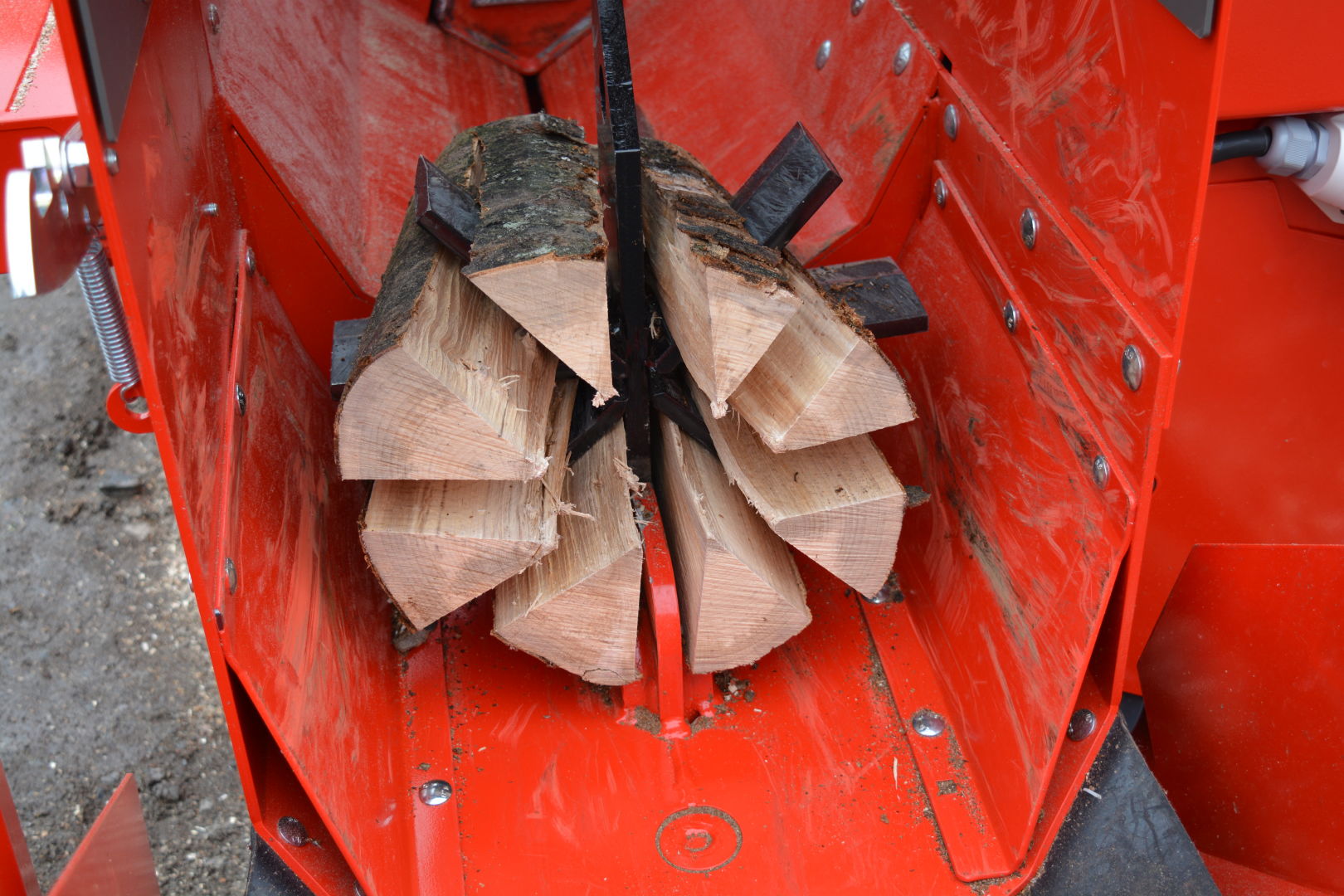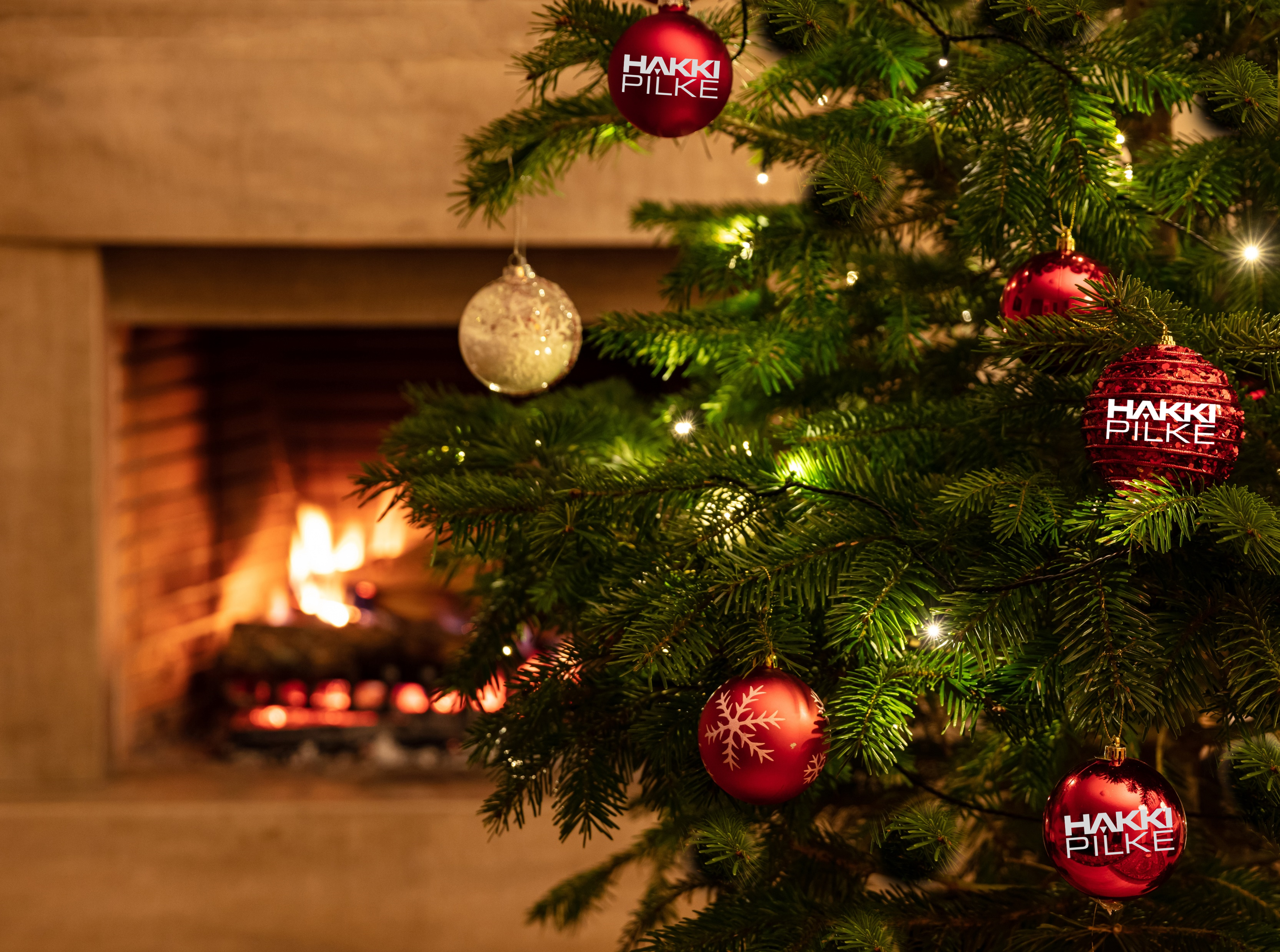
INCREASE YOUR FIREWOOD PRODUCTIVITY WITH THE RIGHT SPLITTING WEDGES
Sharp knives and industrial-strength steel make for a clean split and maximum durability.
Different Sizes for Different Segments
Some customers are happy with large and heavy pieces of firewood of varying lengths. Others require precisely cut and cleanly split firewood that measures under 4” per side. The higher the quality requirements, the more customers are usually willing to pay for the firewood.
A business that offers lower-grade and cheaper firewood requires a higher production capacity than an operation that focuses on customer segments that value consistently sized and precisely measured firewood to reach same profit level. Catering to both markets efficiently requires some production planning and the right equipment for the job.
What to Look for in a Splitting Wedge?
A splitting wedge with thick knives and wide angles requires considerable force to split the wood. Higher splitting power translates to longer splitting cycles of over four or six seconds, which decreases the productivity of the processor.
Additionally, high force and too wide splitting angles force the wood to tear apart instead of splitting which causes more debris and results in lower quality produce.
Professionally manufactured splitting wedges are staged so that the log will be split in 2, 4, 6, 8 and as many pieces as required in different stages. This way the splitting force requirement is relatively small as the splitting is divided into multiple stages.
Look for a splitting wedge with sharp knives and industrial quality steel for long-term durability. Professionally welded splitting wedges with highest material quality will last for years and split logs with minimal force while keeping the splitting cycles low and firewood quality high.
Quality is Key
Reaching high profit margins in demanding segments requires a processor that is capable of producing precisely cut-to-length firewood and splitting the firewood in salable pieces without generating too much debris.
If you can source logs that are mostly under 12” in diameter, you can use a 6 or 8 way splitting wedge to make small enough firewood for bundles and restaurants. Larger logs require at least a 12 or 16 way splitting wedge to avoid time consuming re-splitting.
Splitting hardwoods to 8 or more pieces places extra emphasis on the quality of the splitting wedge. Many box wedges tend to break and tear the logs during splitting which results in a lot of debris and lower firewood quality.
If your logs vary in diameter, sort the logs before processing to split small logs with an 8 or 12 way wedge to restaurant and bundle firewood. Process the larger logs to another pile for customers looking for larger sized firewood for heating.
If the availability of small diameter logs is good in your region, it is cost efficient to have two processors: a small firewood processor with a fast splitting cycle to make bundled firewood with a 4 or 6 way wedge and a mid to large sized machine to deal with the rest of the logs.
Splitting Wedges for Every Purpose
Keep a couple of different sized splitting wedges at hand to maintain constant firewood size even when log sizes vary. Customers are willing to pay higher prices for not having to deal with large chunks among nicely split firewood that might not fit into or burn efficiently in their wood stoves.
It is also handy to have an outfeed conveyor equipped with a reverse valve or quick stop function to easily re-split any larger pieces into salable firewood.



